Disclosure: This post contains affiliate links that I may earn a small commission from if you purchase something through them. This comes at no extra cost to you!
One of the most accessible, diverse and safe regions in the world for independent travel, Southeast Asia is a backpacking mecca.
The region attracts millions of tourists annually, but there are certain things you should know before you go that will help to keep the surprises to a minimum. Most people learn these steps the hard way, so to help you prepare both mentally and physically for your trip I’ve created a list of 46 essential backpacking tips including cultural respect, environmental consciousness and how to make sure you stay safe throughout your trip, wherever you’re heading!
Affordable prices, staggering landscapes, bustling cities, unique cultures, intricate cuisines and tropical beaches are just some of what makes this area so popular with adventure seekers. Over the past 6 years I have visited all of the 11 countries in Southeast Asia apart from East Timor, and it’s safe to say it stole my heart ever since I first came came in 2016. With that knowledge I have included some snippets from my real experiences throughout this post to make it as relatable, honest and helpful as possible.
If you’d like to read my post on packing essentials, check it out here: 34 Packing Essentials For Solo Backpackers In Southeast Asia.
Table of Contents...
Toggle
An important overall point
As many countries in Southeast Asia are less-developed certain things can test your patience too. The village cockerel outside your window woke you up at 5am, the bus is 2 hours late, the sink in your room leaks, a rat ran through the restaurant – these are really just little things in the grand scheme of things. You need to learn to just go with the flow and chill out.
On that note, anger doesn’t get you far either. In countries like Thailand it’s common to laugh about situations that would probably enrage a westerner at home. For example if someone’s nearly killed in head-to-head car accident, instead of aggressive road rage you’ll see them share a laugh before cracking on with life.
Open your mind and embrace the culture. You’re the guest here.
17 budgeting tips
We all want to save money, right?!
1. Find free things to do
No matter where you are in Southeast Asia, by simply Googling “Free things to do in…” you can discover a massive selection of fun activities in your area that are mega budget friendly. Typical free things to do include visiting beaches, parks, night markets, viewpoints, hikes, museums, photogenic streets and waterfalls.
Also, in many well-developed cities you can jump on a free walking tour which is an amazing way to explore the highlights with a local guide while getting your step count in for the day, too. Best of all, it’s totally free! However, you should leave a tip if you enjoyed the tour as these guides aren’t paid and only make their money through tips.
2. Learn to haggle
Sometimes we feel a bit awkward doing this, but haggling is very much expected in Southeast Asia. The first price is almost never the actual price, and this skill will come in handy at more places than just Asian markets!
That said, you should only haggle for certain things – don’t try to get a discount for your dinner in a restaurant! Tuktuks and market stalls selling clothes and trinkets will often offer a largely inflated price to begin with, because hey, they might as well try their luck, but they will be open to negotiation immediately.
Simply by smiling and asking “is that your best price?”, there is a 90% chance the seller will make you a better offer. You can even haggle without saying a single word sometimes by showing interest, asking the price, and then making a motion to leave after you hear it. Watch as they shout after you with a whopping discount. Sometimes, it’s as easy as that, but always remember to be polite!
3. Drink less in bars
Cutting down on drinking alcohol is an obvious way to save money, especially on nights out in bars.
Nights out can quickly eat into your budget in the long term and in many Southeast Asian countries, when you hear the cheap price of a beer or cocktail, it’s sometimes too easy to get carried away one too many times. Why not stock up for your night at a local supermarket then pre-drink and save a heap of money? In Laos a litre of Laos Whisky costs the same as a large bottle of water in some supermarkets!
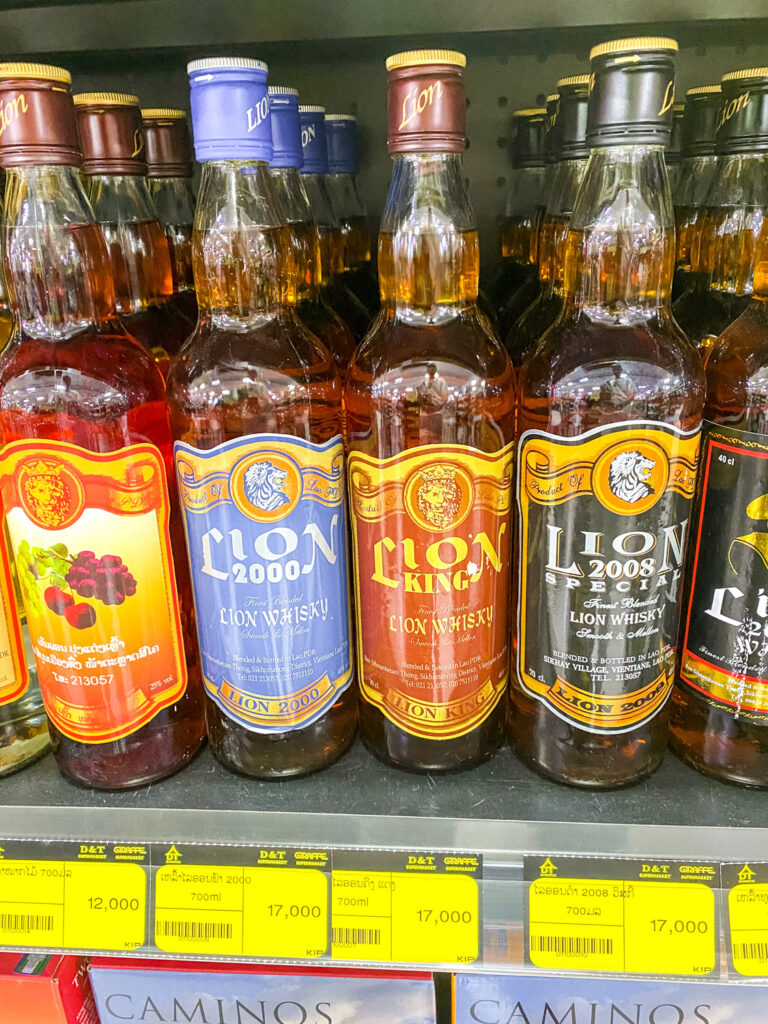
4. Stay in hostel dorms
Basically: the bigger the dorm, the bigger the savings.
Dorms are not only a great way to meet like-minded backpackers, but also a great budget option for solo travel. There are plenty of good hostels across the continent offering small 4-man dorms for around $3-$5 per night, with some larger ones even cheaper than that!
The best part? You’ll often get a free breakfast included in the price, saving valuable pennies in the morning too.
Check out Hostelworld for the best prices across Southeast Asia.
5. Use public transport
Public transport is more affordable, fun and frequent than tourist transport.
Local buses, trains and tuktuks are a great way to get around on a budget, whether you’re travelling near of far. Sure, it sometimes takes longer to get from A to B, especially when buses stop to drop off post and pick up rural hitchhikers every 10 minutes, but it provides a unique experience, gets you closer to the local community and saves you valuable pennies in the long run.
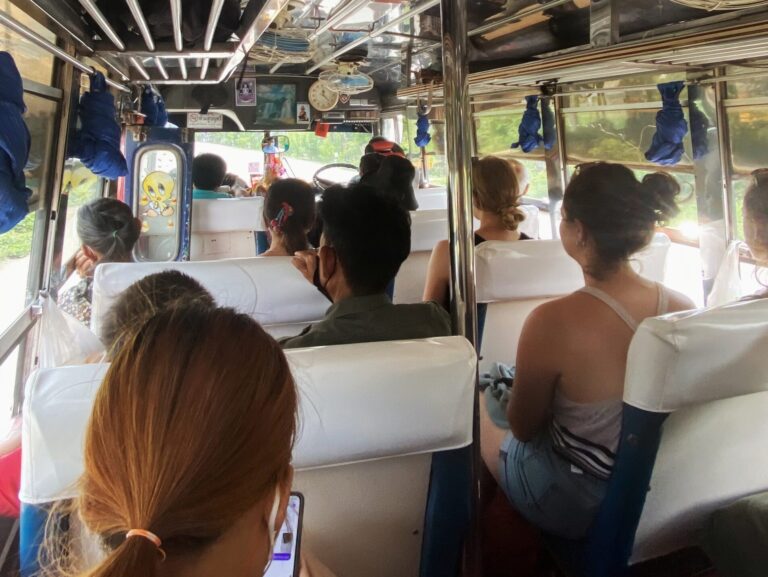
6. Eat local food
In towns and cities across Southeast Asia you can usually find large outdoor food courts offering delicious and affordable food.
A couple of the best local food locations I’ve been to in this part of the world that spring to mind are Jalon Alor in Kuala Lumpur and the Chiang Mai Sunday Night Market.
Street vendors usually provide massive portions for fair prices, plus you get the experience of watching your dinner get cooked right in front of you! The value for money with local food is huge and it’s a great way to try new things as well. At the end of the day, what backpacker doesn’t love a dinner for $1 or less?!
7. If you can walk, walk!
Your feet are free – use them!
Many of the best attractions in towns, cities and villages are within walking distance from each other.
Slow down and save money on travel by walking instead of taking other modes of transport and you’ll provide yourself with the opportunity to see local life and witness things you wouldn’t see when flying past on a motorbike or tuktuk.
8. Do your own laundry
Even though laundry in Southeast Asia averages around £1 per kilo for a wash and dry, you can save up quite a lot of money by doing it yourself.
Buy some laundry detergent and wash it in your sink or shower. Plus, with the intense temperatures outside, it’ll dry in a few hours or less for free. Every little helps!
9. Keep track of your spending
By tracking your expenses you’ll always be on the ball.
Many backpackers find it helps to give themselves a daily allowance so they don’t go home broke after a big trip. There are several useful apps to help track how you spend your money, or alternatively you can make notes on your phone every time you spend which is what I do.
In the less-developed Southeast Asian countries card payments are not common and cash is predominantly used. By noting down what cash leaves your wallet, and for what, you’ll be organised and aware.
10. Find accommodation on arrival
Save money by not booking ahead.
Although companies like Booking, Hostelworld and Airbnb are extremely convenient and usually very affordable, you can save a lot if you wait until you arrive and ask around.
Alternatively, for peace of mind, you could book 1 night online and then inquire with the owner on-site about staying longer, which will nearly always be cheaper than advertised online. It also means they won’t have to pay the whopping 20% commission that Booking.com charge business owners, so you’ll be helping them out too!
11. Get a reusable water bottle
Save the planet and save money!
Packing and using a water bottle not only saves the planet by using cutting down on plastic waste, but also saves you around $0.50 – $1 every time you’d normally buy a bottle!
There are many drinking water taps in places like hostels and public spaces to fill up your bottle for free, so really it’s a no-brainer. Additionally it means you’ll be encouraged to drink more and stay hydrated if you’ve always got a bottle nearby. I’ve got a water bottle with me everywhere I go and have done for the past 5 years and it’s a game changer.
It also comes in extremely handy in airports and on flights where there are free fill-up points to avoid extortionate airline and vending machine prices.
12. Do prior research
Make yourself aware of the normal costs of things before you arrive somewhere, especially airport transport on arrival.
This way you have an expectation of how much is normal to pay to avoid being overcharged or scammed by services like taxis, tours, hotels and attractions.
It rarely happens in this part of the world, but it’s best to be sure, especially for taxis or tuktuks where prices are often made up on the spot. The most common place for these scammers is at airports because they know weary-eyed tourists have just arrived and are probably visiting for the first time.
13. Hitchhike
14. Use overnight buses
Overnight buses are a fantastic experience and a fraction of the price of flights for long journeys.
Not only do you save on a nights accommodation, but by the time you wake up you’ll be somewhere totally new! Usually they have 2 levels, kind of like bunk beds, and each is fitted with a mattress, pillow, curtains and charging point.
Think of them as a large, moving, horn-blasting hostel dorm. The best overnight buses I’ve experienced were the Vietnamese ones, where a bus cost around £7 and if you’re lucky you can get the whole double bed at the back!
15. Learn to ride a scooter
I’m a huge advocate for riding motorbikes in Southeast Asia and I get one wherever possible.
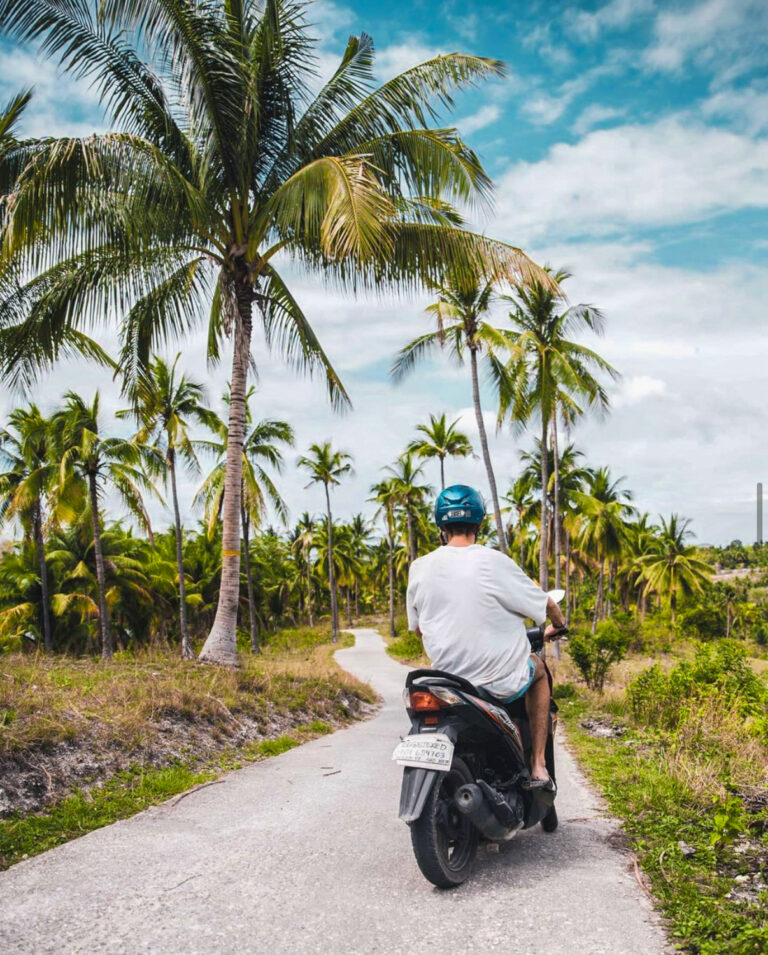
Within Southeast Asia are some of the best and most popular locations in the world for beginners to learn and is seriously worth giving a shot. Just do what the locals do and you’ll be fine… maybe avoid the motorways though!
Prices change depending on the country, but as an idea most bikes will cost roughly $5 per day in countries like Vietnam, Thailand and Cambodia. You normally get a discount for long-term rental, for example I paid £80 for 1 month rental in Chiang Mai (£2.70/$3 per day). Fuel is extremely cheap and you’ll only need a couple of dollars to fill up a scooter.
16. Starling travel card
“The no-fees travel bank card”
I’ve been using a Starling Card for the past few years and with one of these the only fees you’ll need to pay are the standard ATM fees – you’ll never be charged for spending your money internationally.
For me, nothing comes close to Starling, especially with its super user friendly app. It’s also completely free to start using!
17. Watch for high ATM fees
ATM fees can sting.
For example, in Thailand ATM’s charge you around $6 for every single withdrawal which sure adds up after a few months. You can save long term by paying on card when possible (not as frequent as you may think) or by taking out large sums at one time.
If you take out large sums, make sure to store it somewhere safe in your room – you never want to be walking around town with millions of Vietnamese Dong in your pocket!
8 tips on staying safe
Overall, Southeast Asia is an extremely safe place to travel and I have personally never been the victim of a scam or theft, touch wood! However, you can never be too safe.
18. Keep an eye out for pickpockets
19. Wear a helmet
An absolute essential for anyone renting a scooter, a helmet really is a no-brainer. The roads are terrible in some destinations and even though people drive pretty slow in general, you never know what’s around the corner. A herd of cows, massive potholes, children playing… anything could be waiting for you!
I first rode a bike back in 2017 and feel very confident on them now, having rented over 50 across the continent and I *touch wood* have never had a serious accident. However, I have had a few very close calls and crashing is quite common among inexperienced tourists, so just wear one.
As my mum once said, “it’s not you I’m worried about, it’s all the other idiots on the road!”.
20. Scooter theft
On the topic of scooters, a real problem in the poorer southeast Asian countries like Laos is theft.
I remember when I visited Laos for the first time in 2019 and rented a bike from Luang Prabang and I was surprised to receive a lock for the front wheel with it. When I questioned why (because I’d never been given one before), he explained how it’s common that they are stolen around tourist areas.
If you don’t use it and your bike gets nicked you could be slapped with a fine priced at the value of the bike in excess of $2000. Again, it’s not common, but it’s better to be overly safe than full of regret.
21. Don't drink tap water
Basically, unless using a water purification tablets, tap water will more than likely make you sick in most countries.
Best take these just in case.
22. Use ride-share Apps
Grab is Asia’s version of Uber and is available in most cities and major towns and means you can easily avoid scammy, overpriced taxis which, unfortunately, are all too common.
Although tuktuks are often marginally cheaper, the fixed prices and cash-less system that Grab uses mean you never need to worry about magical changes in price once you reach your destination. It also means that you don’t need the correct change to give the driver and it’s much safer for solo travellers because your ride is tracked on the app.
You can also use Uber, Dart, Pathao and Bolt – it just depends which country you’re in.
23. Check your change
Although not common, it does happen sometimes that you are accidentally (or purposely) shortchanged.
It always helps to give it a quick count, especially in countries where many bills equate to a relatively small amount of money so it can be easily missed.
24. Use a padlock
A padlock for your suitcase or backpack is an extremely worthwhile investment to keep your luggage safe in busy hostels, airports or public places. You never know who’s lurking around!
25. Don't flaunt your money
Apart from being culturally disrespectful, if you walk around with your money belt or cash in plain sight you’re basically asking for hassle and higher prices, which is why I never recommend money belts.
Make an effort to blend in with the locals and keep it concealed to be as safe as possible. That said, you should only ever be carrying what you need at the time, not all your cash!
9 cultural awareness tips
As a visitor to a different country, it’s important to be aware of local cultures, religions and general ways of life.
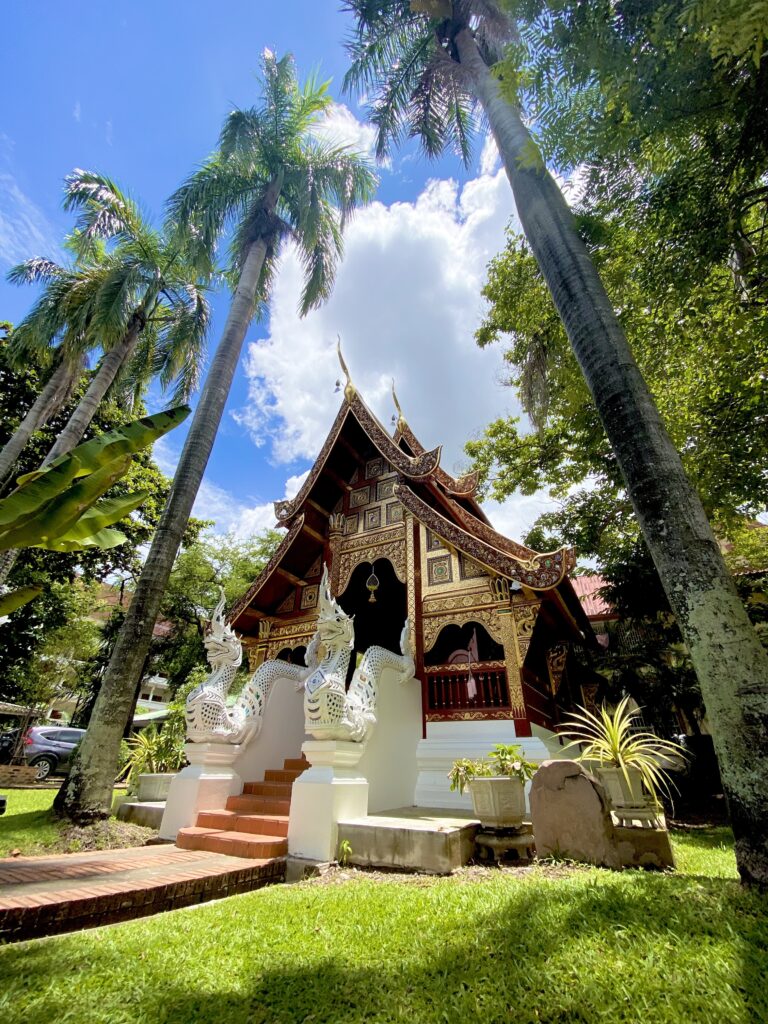
26. Respect religious beliefs
Religion is a big deal in all Asian nations.
Southeast Asia is largely a Buddhist part of the world, with Islam, Christianity and Hinduism also prominent in some destinations too. Take 5 minutes to learn about the religious beliefs of the place you’re heading to before you arrive there.
Anywhere you travel, it is essential to be respectful of local cultures. For example, to enter a Buddhist temple you must abide by the rules, such as covering your shoulders, removing your hat, taking off your shoes and sometimes not taking photos inside. Women also have to wear a sarong covering their legs.
27. Public affection
PDA (publicly displaying affection) is frowned upon in this part of the world as it is believed that acts of love should be kept behind closed doors.
This includes anything that could be considered sexual, from holding hands to kissing, so be respectful and try to keep it to a minimum when you’re out and about!
In some countries in Southeast Asia men aren’t actually allowed to touch a woman in public unless shaking hands.
28. Learn some of the local language
Locals absolutely love to see you try and speak their language, even if it’s just the most basic phrases.
“Hello” and “thank you” are obvious pleasantries to know, but why not push the boat out and learn something like “can I have an iced coffee, please” and I promise you’ll get a good reaction. You often see people’s faces light up when you just give it a go!
29. Try local cuisine
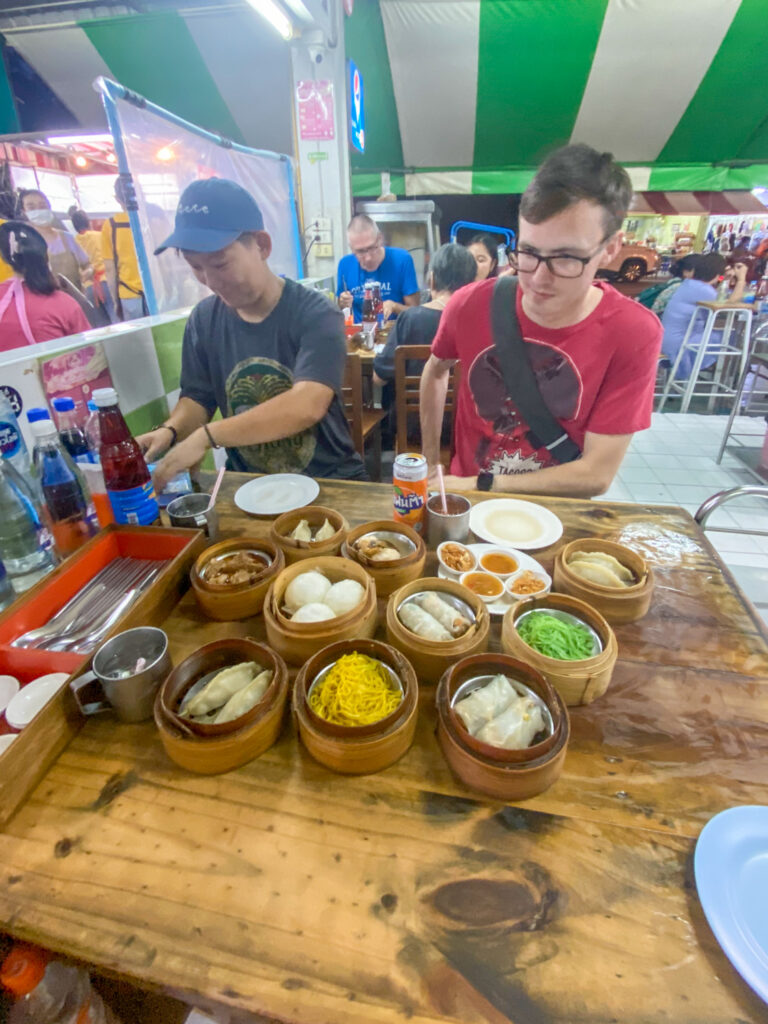
30. Remove your shoes
Not only applicable at temples and religious sites, many buildings like guesthouses, hostels and massage parlours will ask you to remove your shoes before entering.
Feet are spiritually seen as the dirtiest part of the human body and that’s why, when you go for a massage, they will wash your feet straight away. It’s also why when Buddhists pray at a temple their feet are always facing away from the Buddha.
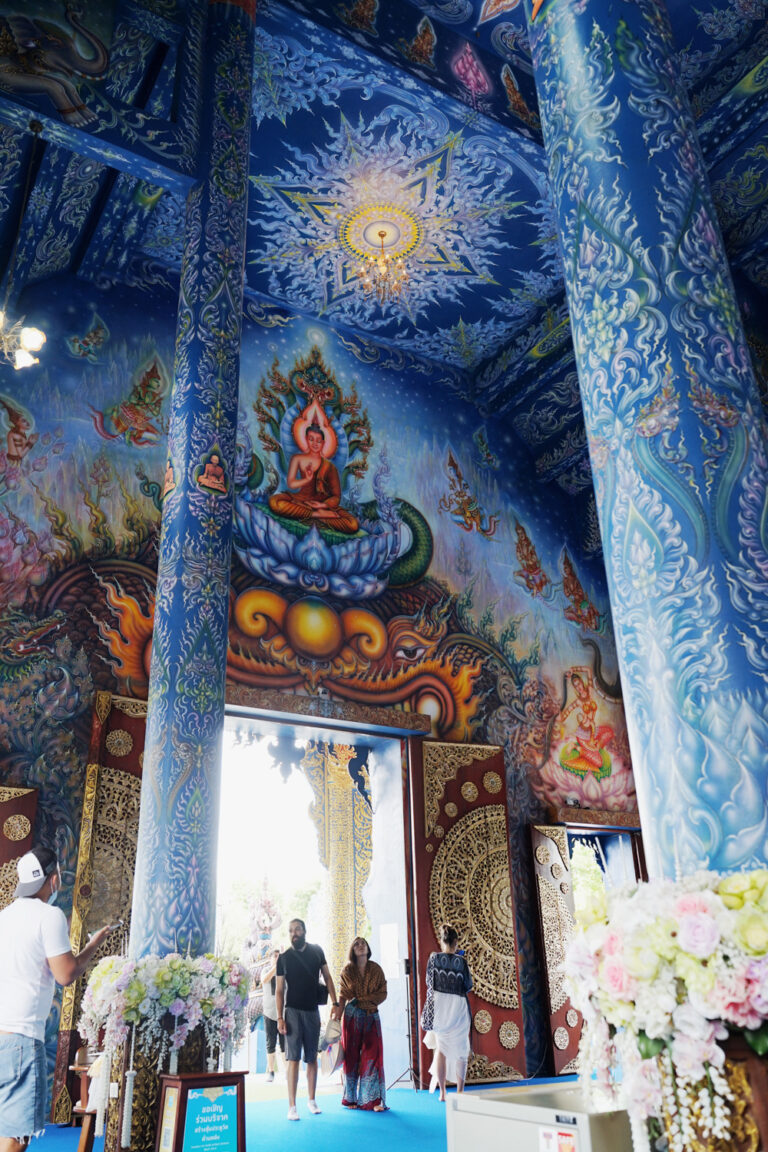
31. Don't rush. Appreciate.
In order to fully understand a country’s culture you need to spend a decent amount of time immersing yourself around it. “Doing Camobodia” in 3 days does not count.
As a rule of thumb, I would suggest spending an absolute minimum of 10 days in a country, which should allow you to paint a fair picture of it’s characteristics, people and food while you move around different locations within it.
I meet so many people who absolutely zoom through countries (especially in Europe where travel is quick and easy) just to tick it off, when there is so much still there waiting to be discovered. If you have the time – stay!
32. Learn about the culture and history
Of course visit the tourist hot-spots like local markets and temples, but try to make a point of getting off-the-beaten path and learning something that will further your understanding the country too.
Although tragic, many countries in this region have a dark war history that deserves to be studied and understood by visitors. Vietnam and Cambodia are the ones that spring to mind and I couldn’t believe some of the things that happened in Cambodia during the Khmer Rouge reign. What surprised me more was that I’d never heard about Pol Pot or any of what happened there until I went! He (Pol Pot) was arguably a worse piece of work than Hitler, but us westerners never seem to hear about him.
Places like the Killing Fields in Phnom Penh and the War Museum in Saigon are eye-opening places that I think every visitor should go.
After all, it wasn’t even that long ago!
33. Be polite to locals
There is never a need to be rude to people who have a lot less than you and I see it far too often. Did you know the minimum wage in Thailand is around just $8 per day?
Kindly smile and say “no, thank you” if you are not interested in buying something. They’re just trying to make a living and it really bugs me when I see privileged people being rude to them.
34. Be open-minded
Life is often very different here to what many first time visitors are used to at home. Prepare for a culture shock and try to reach the stage of acceptance as soon as possible – don’t get frustrated.
5 ethical travel tips
Usually in less-developed countries, where money is harder to come by, there are some ethical tips you should know and things to avoid.
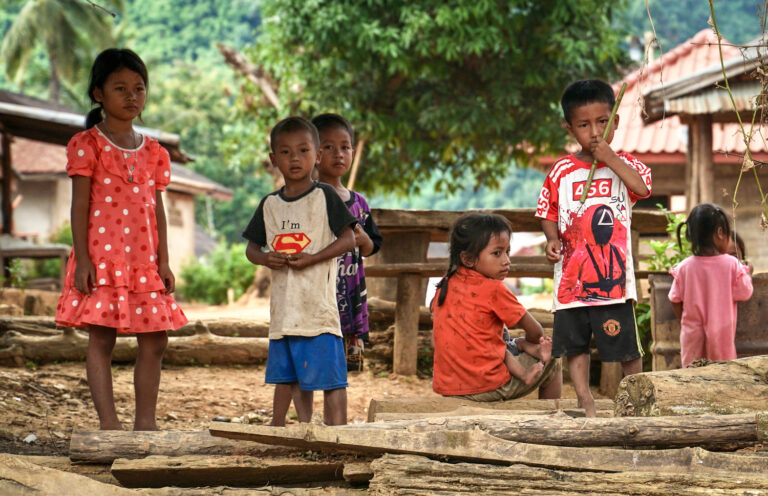
35. Elephant riding and animal tourism
Animal tourism is a long-disputed subject and it’s a massive industry in Southeast Asia, but sadly so is the abuse of these animals. In some places young elephants endure a horrific process where they’re forced into a tiny pen and are beaten and starved into obedience. Luckily times are slowly changing and these places are being shut down, but it still exists.
It is a tough one, especially considering riding horses is widely accepted, but I find the best way to think of this topic is if you see an elephant being ridden, you can almost guarantee they have been mistreated and you should not support that.
I visited Mae Vang Elephant Sanctuary near Chiang Mai for 3 days in 2016 where they truly adore and care for the animals that have previously led a life of abuse. Do your research beforehand and don’t support unethical camps – there are many ethical sanctuaries out there!
Check out experiences on Get Your Guide.
36. Do some volunteering
37. Environmental contribution and pollution
Leave it as you found it, or even better, leave it better than you found it.
Although many towns, rivers, beaches and forests in southeast Asia are sadly extremely polluted, you can do your best not to contribute.
Avoid single-use plastics by using a water bottle and dispose of your waste responsibly. I’ll never understand how someone can just throw an empty can into a river, but unfortunately there are just some cultural differences that are unexplainable.
Join a group beach clean-up offered by some hostels, or just pick up trash as you see it and put it in a bin. Whatever you do, don’t contribute!
38. Shop local
39. Unethical long-neck tribes
The Long Neck tribes originate from Myanmar (Burma), but many of the woman you find in Thailand have been taken there purely for the purposes of tourism, with the promise of a small amount of money. Their passports are confiscated and they are not permitted to move outside these tourist villages.
Travellers pay high prices to come and stare at these people (who aren’t allowed to interact with you), take pictures of them and then leave. Think of it as a human-zoo. Additionally, the high prices tourists pay to visit is also rarely given to the women fairly. That’s why they sell handicrafts and trinkets.
I strongly discourage these tours in Thailand. I witnessed the Long Neck people at Inle Lake in Myanmar in 2020, and that was enough for me.
7 tips for staying connected
Stay in touch with the world and the people you meet on your travels
40. Use local SIM cards
Stay connected with friends, family, social media, maps and more by buying a local SIM card. I get one in every country I visit. They are extremely affordable, usually have very high 4G speeds and the coverage is great across most countries.
Prices vary across the continent but you can expect to pay anything from $2-$12 for unlimited data for 30 days. They can be topped up all over the place at stalls and supermarkets, so if you run out of data it’s never the end of the world!
Note: SIM cards at airports or guesthouses are a lot more expensive than in street stalls or supermarkets, so unless you’re desperate it’s best to wait until you’re in the center of town to buy one.
41. Useful travel Apps
There are an array of useful Apps out there to keep you connected all over the world.
Some great Apps:
- Xe Currency – Real-time exchange rates that automatically update every 60 seconds.
- Google Translate – Helps to solve the language barrier problem with local people. It also has a function where you can take a photo of any foreign text and it’ll translate it – a proper game changer.
- Maps.me – Many people use Google Maps, but I find Maps.me far more suitable. Download maps to use offline, plan a route and pin destinations for later.
- Grab, Dart, Uber, Bolt – Asia’s rideshare Apps vary from country to country, but they are all variations of Uber. Available in most cities and major towns and offering affordable rides that can be paid for on card and are tracked, these apps are a safe and convenient way to travel.
- TripAdvisor – Check out reviews of restaurants and sights before you go to see what sort of experience others have had recently.
- Hinge/Bumble/Tinder – Mostly used as dating apps, don’t rule these out to connect with other backpackers! They are a handy way to make friends with like-minded people and share experiences together.
42. Stay in hostels
Hostel dorms are a great way to connect with fellow travellers and likeminded people at an affordable price.
Truly some of the best solo travel decisions I’ve made have come from recommendations from people I’ve met in a hostel, like recently going trekking in Nong Khiaw. Dorms aren’t always my personal preferred choice of accommodation, but sometime I do stay in them because they offer an incredibly social environment and, even for the introverts among us, encourage you to mingle.
Find accommodation in your area on Booking.com or Hostelworld here.
43. Use Facebook groups
Many backpackers use Facebook groups to find fellow travellers who are looking for things to do, travel buddies and general tips, ideas and advice in an area near them.
It may be an idea to join some of these to connect with people in your area. Just type in “Southeast Asia backpacker community” (or something more country-specific) and join in!
44. Organised group tours
Group tours are a great way for solo travellers to meet people and see the highlights of certain destinations, especially if you’re short on time. They are normally more expensive than doing it by yourself on public transport or motorbike, but often more convenient and time efficient, plus you’ll have the unrivaled knowledge of a local guide throughout the trip!
The best companies are Get You Guide, Klook and Viator.
Some of the best group tours I’ve done in Southeast Asia are:
- Thailand: Doi Inthanon, Chiang Rai, Phi Phi Islands
- Vietnam: Halong Bay 2 day cruise, Trekking in Sapa
- Laos: Trekking in Nong Khiaw
- Philippines: Island hopping in Coron and El Nido
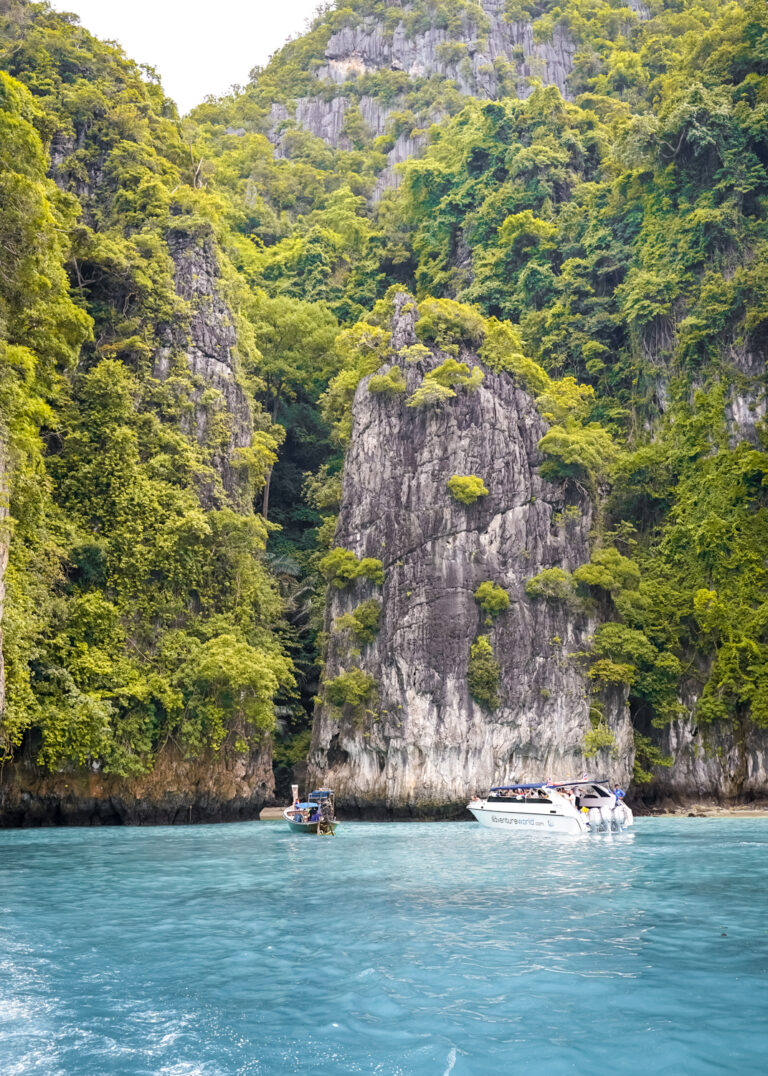
45. Download podcasts
Podcasts are a great way to pass the time when you’re on a ridiculously long bus journey or flight.
When you’re travelling there will be down-times at some point – fact. Podcasts help to fill the void and can help educate you on just about any topic these days. They’re awesome for keeping you entertained on a long journey and, sometimes when travelling solo, it’s nice to hear familiar voices.
My personal favourites are ‘Happy, Sad, Confused’, ‘Diary of a CEO’, ‘Off Menu’ and ‘The Joe Marler Show’.
46. Exchange socials
There are some well-defined backpacking routes across Southeast Asia, so you’ll sometimes find yourself bumping into the same people more than once. This has happened to me countless times.
On the flip side, you could spend an amazing few days with someone and then one of you moves on and you never meet again.
Before you say your farewells, exchange WhatsApp, FaceBook or Instagram details. It may lead you to discovering somewhere you’ve never heard of through their travels, or who knows, maybe you’ll be in the same part of the world again one day!
5 packing essentials for Southeast Asia
- Portable power bank: This little piece of kit doesn’t take up much space and comes in handy all the time while travelling cross-country on long bus journeys and in rural areas. View options here.
- Rain jacket: Having a decent waterproof jacket or poncho is vital because you never know when the next downpour is going to hit.
- A multi-tool: A multi tool could come in handy on many occasions, especially one with a bottle opener on it!
- Travel towel: Having a compact travel towel is essential for the monsoon season or beach days. They’re fast drying and don’t take up much space in your bag!
- Water bottle: Buy a reusable water bottle and save the planet by filling it up at drinking taps in hostels rather than buying plastic bottles.
Read this post for more packing essentials: 34 Packing Essentials For Solo Backpackers In Southeast Asia.

Thank you for reading this travel guide – I hope you found it helpful! Feel free to leave a comment below if you have any questions and I’ll get back to you as soon as possible
Happy travelling!
HELPFUL RESOURCES FOR PLANNING YOUR TRIP
Accommodation: Booking.com, Hostelworld
Tours: GetYourGuide, Viator, Klook, TripAdvisor
Transport: 12Go, Omio, Trip.com, Rome2Rio
WHO IN THE WORLD IS JAMES?
Click below to learn more about my story, including 5 random facts about me, some travel FAQ’s and my entire travel history.


